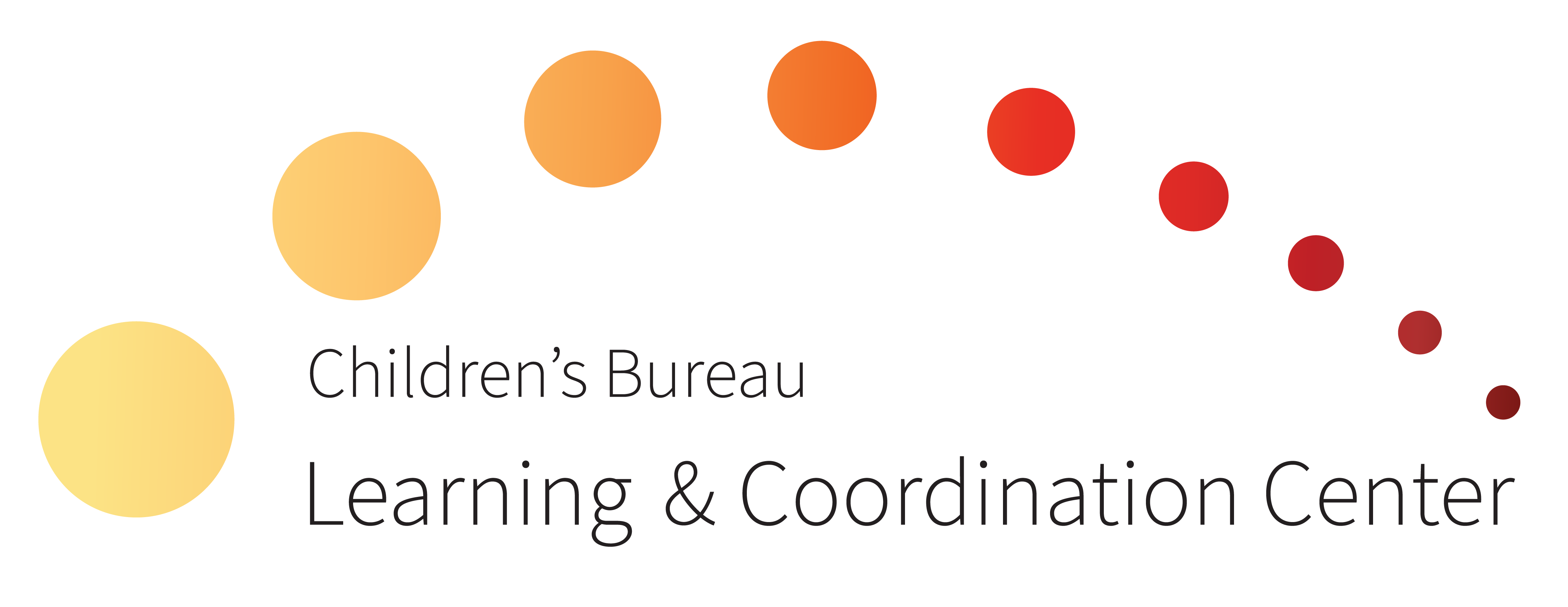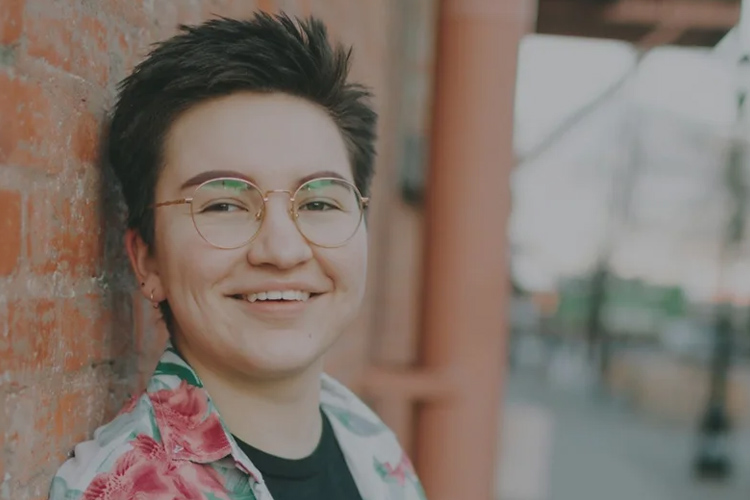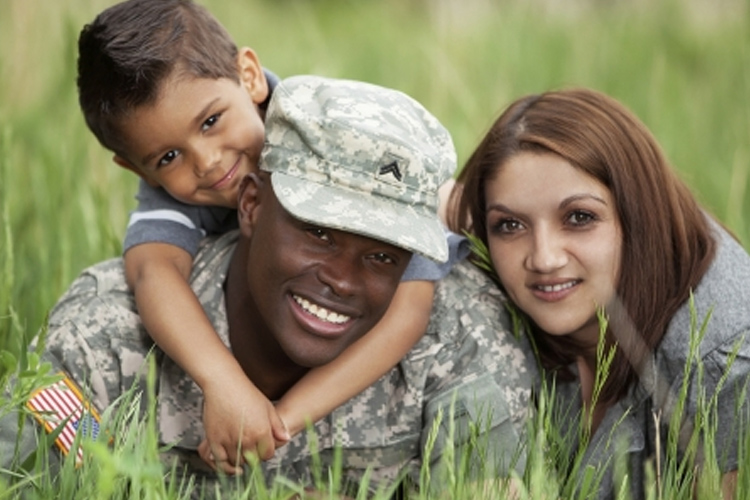Asked & Answered

1 / 5 ➔
How can foster parents help children stay connected with incarcerated parents?
2 / 5 ➔
Foster parents can help by encouraging letters, phone calls, and visits for children. I think visits, phone calls, letters, and the parent’s voice on tape are critical to the attachment process, even for very young children.
3 / 5 ➔
Even the smell of a parent is important to a very young child. Foster parents could, for instance, find out what mom’s detergent or lotion is inside the facility and make sure that the infant or toddler’s sheets or blanket have the same scent. When they visit the incarcerated parent, the scent will create comfort and familiarity.
4 / 5 ➔
Check out CBLCC's tip sheets on age-appropriate strategies for Supporting Relationships Between Children and Their Incarcerated Parents and Supporting Communication for Families Impacted by Incarceration.
5 / 5 ↻
From a two-part Digital Dialogue with Ann Adalist-Estrin, director of the National Resource Center for Children and Families of the Incarcerated (December 2017 & January 2018).

1 / 5 ➔
Many in my parenting classes have been exposed to the same traumas that their children are now experiencing. How do we educate the parents about trauma when they are victims themselves?
2 / 5 ➔
These issues are best addressed through a two-pronged approach. First, addressing the parents and their trauma is critical. That should include psychoeducation, raising awareness, and then supporting parents in processing and healing from their trauma.
3 / 5 ➔
In addition, we have seen success in giving parents skills for parenting their children who have trauma. Sometimes through these trainings, and understanding how trauma works and its effects, a parent can connect the dots about their own life.
4 / 5 ➔
Finally, for the children, it is really about providing healing and ongoing support. We know that the cycle of violence for many people continues, especially when they are polyvictims. Ensuring that the systems the children are interacting with are coordinating and providing preventive services and support is critical to breaking the cycle of violence.
5 / 5 ↻
From a December 2018 Digital Dialogue with Natalia Aguirre, National Director of the Family Justice Center Alliance at the Alliance for HOPE International, and Stacy Phillips, Program Manager for the Justice Department’s Office for Victims of Crime.

1 / 5 ➔
How does what you’ve learned about polyvictimization guide prevention priorities?
2 / 5 ➔
Phillips: We’ve seen a shift in the paradigm. It’s no longer just crisis intervention and event based. We’re looking at the whole person holistically over their entire lifespan and moving from being a domestic violence advocate or a child advocate to being a trauma advocate and being able to assist with healing over the lifespan.
3 / 5 ➔
Aguirre: In our work at Family Justice Centers, because we largely work with the parent or the adult survivor, we focus on prevention by working with the whole family to ensure that we’re breaking the cycle of violence, and providing education to prevent something from happening again.
4 / 5 ➔
[W]e’ve taken it as a learning lesson as to how we can build these hope-centered programming and interactions with survivors, and what that information will provide us for moving forward from the policy angle or to increase our capacity to serve survivors.
5 / 5 ↻
From a December 2018, Digital Dialogue with Natalia Aguirre, National Director of the Family Justice Center Alliance at the Alliance for HOPE International; and Stacy Phillips, Program Manager for the Justice Department’s Office for Victims of Crime.

1 / 4 ➔
Can the relationship with children’s mothers be a challenge to father involvement?
2 / 4 ➔
Often, people assume that if they just add a fatherhood program or fatherhood resources, they can help a father independently become more involved in their lives. Many times, no matter how great a father becomes in terms of developing pro-fathering knowledge, attitudes, and values, a mother or other primary caregiver can prevent access to his children.
3 / 4 ➔
Unnecessarily restrictive gatekeeping is when the mother either consciously or unconsciously restricts a father’s access to his children when it’s not necessary. There are some cases, of course, when the father might be a danger to the mother or to the child, but in the vast majority of cases, that’s not what’s happening. Often anger or some other conflict has caused the mother to act in this particular way. It’s really important to provide resources, and even programming, for mothers that are specifically designed to increase father involvement.
4 / 4 ↻
From a June 2018 Digital Dialogue with Christopher Brown, President of the National Fatherhood Initiative.

1 / 4 ➔
Can you speak to the intersection or necessity for faith-based spirituality as a way to create resilience?
2 / 4 ➔
Many, many people draw their resilience from their faith. For people who have a religious or spiritual belief system, it’s a big component in having hope for the future and getting through hard times.
3 / 4 ➔
Additionally, there are a lot of families who don’t interact with formal service providers but do go to church or synagogue or mosque. We want to make sure that they’re getting family support, and that either the clergy or the lay staff in those organizations understand protective factors, have a sense of what kind of support they can provide to families, know what other resources are available when they can’t meet a family’s needs, and know how to connect them to those.
4 / 4 ↻
From a March 2019 Digital Dialogue with Cailin O’Connor, Senior Associate at the Center for the Study of Social Policy.

1 / 4 ➔
How effective are prison nurseries?
2 / 4 ➔
I think that prison nurseries for pregnant mothers are really critical to attachment. Research conducted by Mary Byrne indicates that the children who are born in prison nurseries and get to stay there until they're 18 months old score much better on attachment measures, and the recidivism rate for the moms in these programs is very low. They are costly, however.
3 / 4 ➔
People tend to have negative impressions of prison nursery programs because babies are in prisons—even though the environment in prison nurseries is very child friendly and supportive to the parent-child relationship.
4 / 4 ↻
From a two-part Digital Dialogue with Ann Adalist-Estrin, director of the National Resource Center for Children and Families of the Incarcerated (December 2017 & January 2018).

1 / 5 ➔
How do you attend to fathers in the workforce?
2 / 5 ➔
Unless your focus is on unemployed fathers, you’re bound to run into challenges with fathers’ work schedules. The organizations that are most successful come up with innovative ways to provide services either where fathers are (such as where they work) or at times that are convenient for fathers to attend (such as evenings and weekends).
3 / 5 ➔
The challenge is your own staff’s work schedules. In some cases, organizations use volunteers to provide services during non-work hours. Many times staff who are dedicated to this work are willing to work evenings and some weekends, particularly if you can flex their time.
4 / 5 ➔
Showing fathers your willingness to meet them where they are also addresses one of the biggest and probably most significant challenges in serving fathers, which is recruiting fathers into programs and then retaining their participation.
5 / 5 ↻
From a June 2018 Digital Dialogue with Christopher Brown, President of the National Fatherhood Initiative.

1 / 6 ➔
You have cautioned against misuse/overuse of the term "toxic stress." What thoughts do you have on what we can say or how to approach the conversation without using the phrase “toxic stress"?
2 / 6 ➔
I think the term “toxic stress” should only be used in the very precise, scientific way that it was designed. Otherwise, referring to early adversity, "early stress" is the direction that we’d want to go in the field.
3 / 6 ➔
If I had my way, no one would talk with a parent about trauma, toxic stress, or ACEs without talking about protective factors, strengths, and resilience in the next breath.
4 / 6 ➔
I think we always need to share what we know about how parents can buffer their children from experiencing a toxic stress response when they’re going through a hard time.
5 / 6 ➔
We also need to help parents see how they’ve harnessed their own protective factors to get through the hard times that they’ve faced. And at the community or policy level, I’d say the same: We should never talk about risks without talking about strengths and healing.
6 / 6 ↻
From a March 2019 Digital Dialogue with Cailin O’Connor, Senior Associate at the Center for the Study of Social Policy.

1 / 5 ➔
How do you deal with kids’ negative reactions when they have visits and contacts with an incarcerated parent?
2 / 5 ➔
The reasons for the negative reactions are varied. If a child has been traumatized by a parent and they are forced to visit, there could be a secondary trauma. But most often children respond negatively after visits because it’s really stressful to see a parent or someone you love and miss and then have to leave them again.
3 / 5 ➔
Military families have similar experiences. When a military parent is home on leave and has to go back, the children may have trouble in school and be really emotional for days or weeks afterwards. Does that mean the military parent should not come home on his or her next leave? The answer is always no.
4 / 5 ➔
The issue is understanding that children have negative reactions because it’s really painful for them to say hello and goodbye and helping them to adjust.
5 / 5 ↻
From a two-part Digital Dialogue with Ann Adalist-Estrin, director of the National Resource Center for Children and Families of the Incarcerated (December 2017 & January 2018

1 / 4 ➔
How would you go about engaging with a father who won't admit his actions and denies the violence?
2 / 4 ➔
What I find has been more challenging sometimes—on a community level—for an individual who has not been formally charged with an act of domestic violence… is that [T]he individual has to want to change. [I]f they don’t acknowledge that they engaged in domestic violence, the first step is trying to educate them because it could be that they don’t perceive their behavior as domestic violence based on how they were raised—it could be normal to them.
3 / 4 ➔
When I worked in Baltimore city…it wasn’t until when we met with [fathers] and went through peer facilitation and exposed them to another way of understanding family dynamics… that they acknowledged and said, ‘Oh, I didn’t know that verbal abuse was also abuse; I didn’t know that action of mine was physical abuse.'
4 / 4 ↻
From an October 2017 Digital Dialogue with Dr. Johnny Rice II, Assistant Professor of Criminal Justice at Coppin State University and founder of Social Justice Ventures LLC.

1 / 5 ➔
How can we improve parenting programs for people in prison?
2 / 5 ➔
Many programs for incarcerated parents are adapted from programs that were not designed, normed, or evaluated for families dealing with incarceration.
3 / 5 ➔
For example, I was observing a program not too long ago in a state prison in the Midwest. They were talking about nutrition and the basic food groups in the parenting class, and one incarcerated mom said, “I'm sitting here struggling with whether or not I am going to be able to manage out there, and I just can't concentrate right now on the five food groups.”
4 / 5 ➔
We have received positive feedback on programs that deal with the real issues that happen when people get out.
5 / 5 ↻
From a two-part Digital Dialogue with Ann Adalist-Estrin, director of the National Resource Center for Children and Families of the Incarcerated (December 2017 & January 2018).

1 / 4 ➔
What special challenges do incarcerated fathers face?
2 / 4 ➔
Parental identity is so important for incarcerated fathers, but many of them give up their parental identity if someone at home doesn’t keep it going. A lot of incarcerated fathers just stop feeling like fathers. There is some evidence that parental identity is connected positively to lower recidivism and post-parole success.
3 / 4 ➔
Correctional facilities, as well as other systems, should pay attention to providing services to fathers, such as parenting classes and post-incarceration transition planning. We're still working on that, and we’re still trying hard to figure out ways to include fathers in their children's lives—especially for kids in child welfare.
4 / 4 ↻
From a two-part Digital Dialogue with Ann Adalist-Estrin, director of the National Resource Center for Children and Families of the Incarcerated (December 2017 & January 2018).

1 / 6 ➔
Do you have any words of wisdom for practitioners beginning to work with fathers who have used violence?
2 / 6 ➔
I think one of the things that can be helpful is really taking the temperature of where an individual or where the team is at and…assess their readiness to engage men around violence.
3 / 6 ➔
[S]ome of us might come with our own preconceived notions, stereotypes, or even fears that are based in reality.
4 / 6 ➔
[T]he first step is to really do your own self-assessment to see, ‘do I have any barriers or any type of lens… that may already give me a preconceived notion of what the outcome may be when working with this dad?’”
5 / 6 ➔
[Have] an open mind and understand that you don’t have to make this immediate paradigm shift, but … just test one small strategy to see if it improves your work with a dad.
6 / 6 ↻
From an October 2017 Digital Dialogue with Dr. Johnny Rice II, Assistant Professor of Criminal Justice at Coppin State University and founder of Social Justice Ventures LLC.

1 / 4 ➔
How can we keep children from entering the child welfare system solely because a parent is incarcerated?
2 / 4 ➔
Start with the International Association of Chiefs of Police protocol on Safeguarding Children of Arrested Parents. It offers a differential approach to calling in child protective services when arresting a parent.
3 / 4 ➔
If a parent tells you there is a good resource person for the child, and that person has a clear background check, there's no real reason to put kids into the child welfare system. Variations in the policies and practices of individual child welfare agencies determine who gets placed in the child welfare system when a parent is arrested.
4 / 4 ↻
From a two-part Digital Dialogue with Ann Adalist-Estrin, director of the National Resource Center for Children and Families of the Incarcerated (December 2017 & January 2018).



